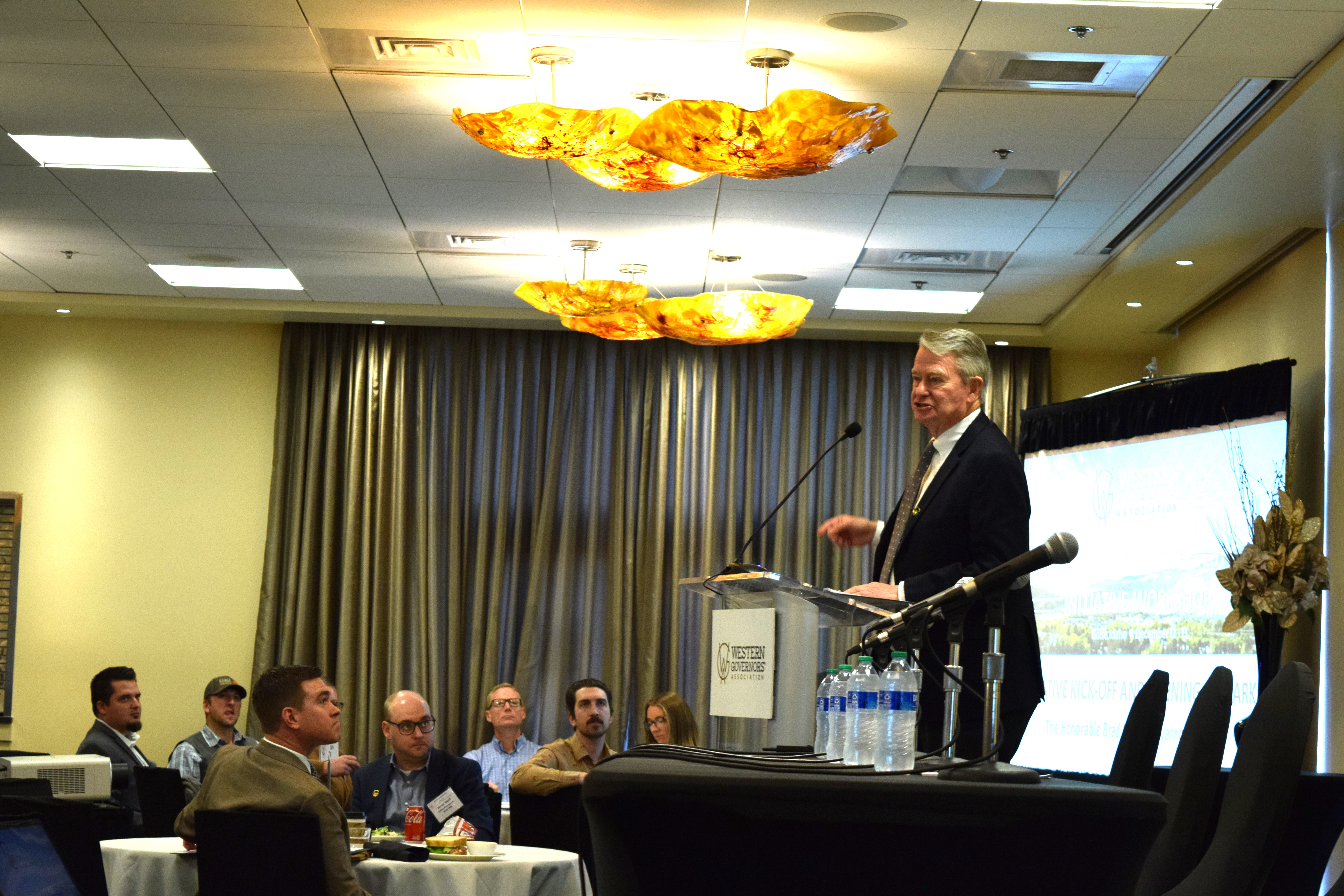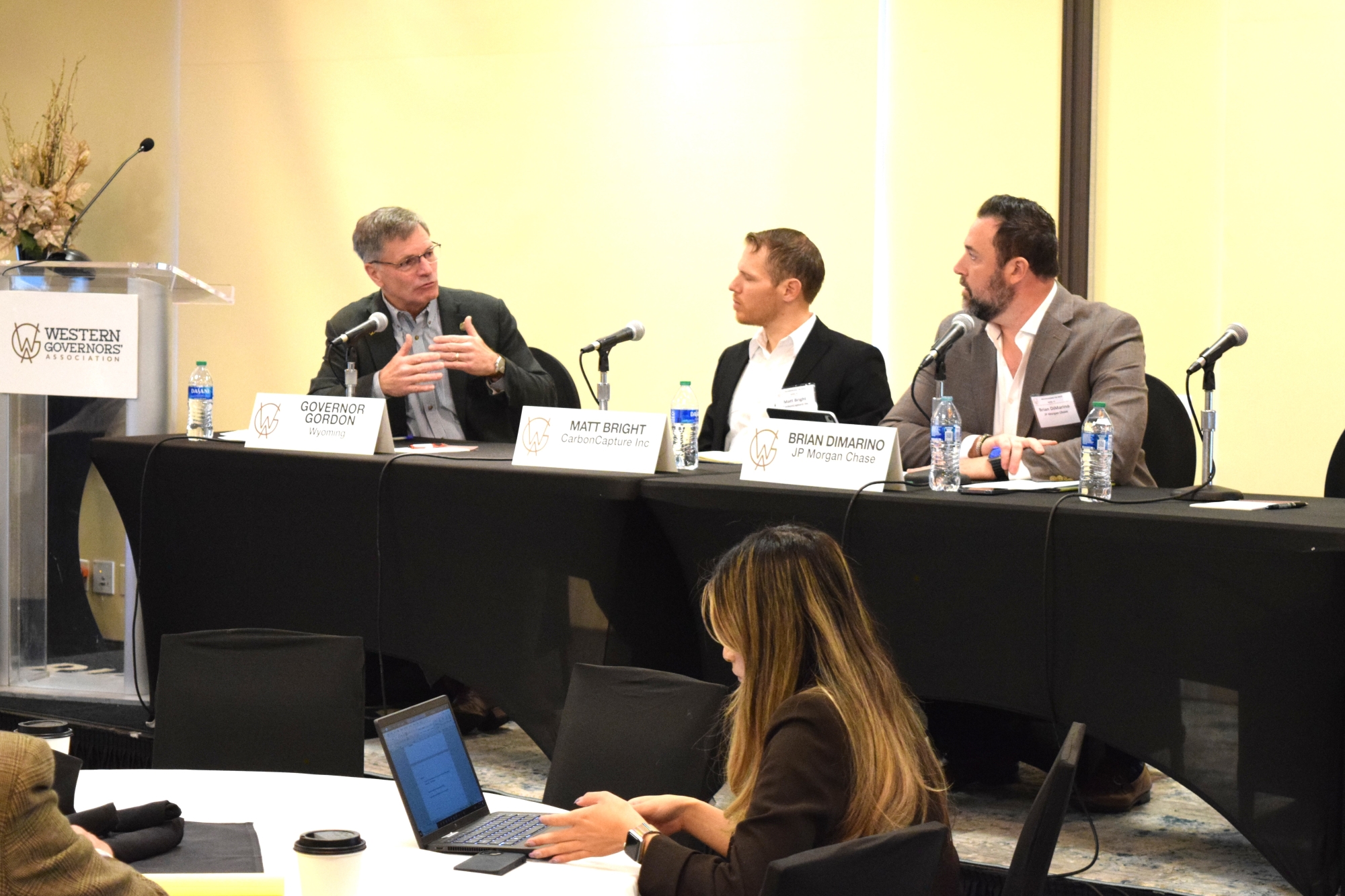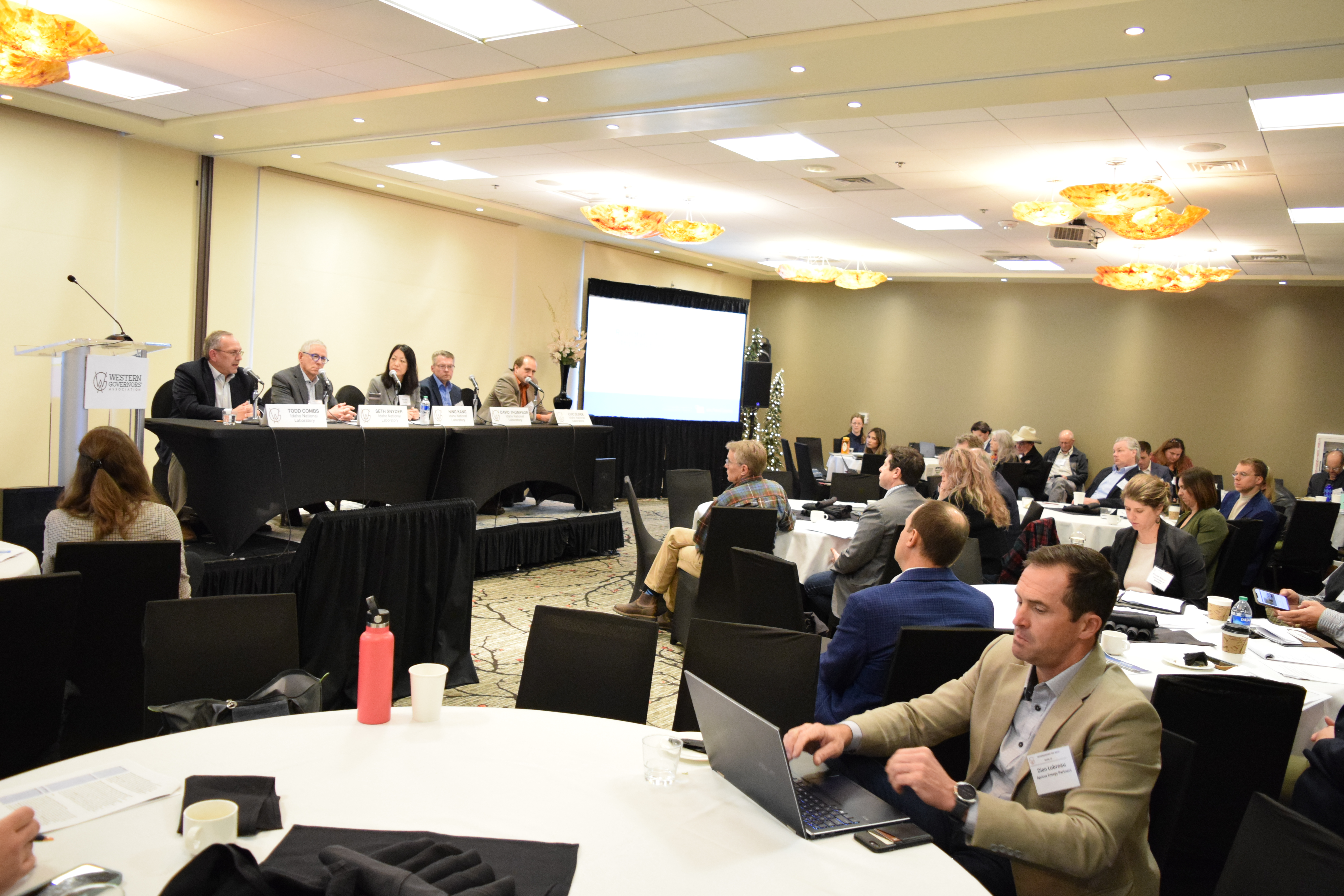12/13/23
Explore the potential for natural carbon sequestration at the Boise workshop of WGA’s Decarbonizing the West Initiative

The Boise workshop of the Decarbonizing the West initiative workshop focused on strategies for expanding natural carbon sequestration methods as a way to not only decarbonize the atmosphere but also create an avenue by which the West’s legacy industries can thrive in a decarbonized future.
Recordings of the remarks given by Wyoming Governor Mark Gordon and Idaho Governor Brad Little, as well as all of the workshop's panel discussions, can be watched on WGA's YouTube channel.

“Natural sequestration is a critical component of decarbonization efforts,” Governor Little, said during his opening remarks. “Healthy forests, soil, and rangelands can sequester enormous amounts of carbon. However, when those resources are poorly managed the opposite can be true… Decarbonization is also creating new opportunities for agricultural producers, for whom carbon sequestration can generate additional revenue while reducing emissions.”
The second day of discussion, led by WGA’s Chair, Wyoming Governor Mark Gordon, keyed in on how states can work with local producers and the private sector to develop more mature carbon markets that would make it easier for producers to adopt these practices and generate revenues to help their operations be economically viable long into the future.

To this end, representatives from the Colorado Department of Agriculture’s Drought and Climate Office, the U.S. Biochar Initiative, and the LOR Foundation explored how different incentives can help increase the voluntary adoption of such practices by pulling various regulatory and administrative levers within federal, state, and local governments.
“One of our top goals as the state is to be the middleman between federal rules and the farmers trying to implement these practices,” Kristen Boysen, the Managing Director of the Colorado Department of Agriculture’s Drought and Climate Office, said. “There’s a real role for states in reducing some of the barriers for entry and using that capacity and doing the bureaucracy and administrative support so that our producers don’t have to deal with it.”
Tying this all together, scientists from the Idaho National Laboratory discussed their research in integrated energy systems and how biomass and captured carbon can be intertwined with other low-or-no-carbon energy generation systems to increase their efficiency.
